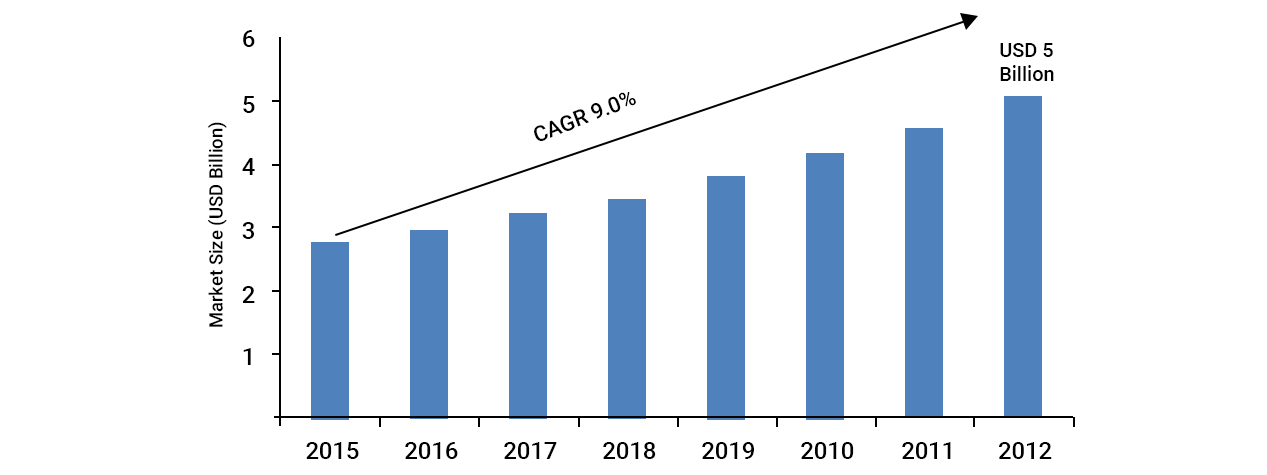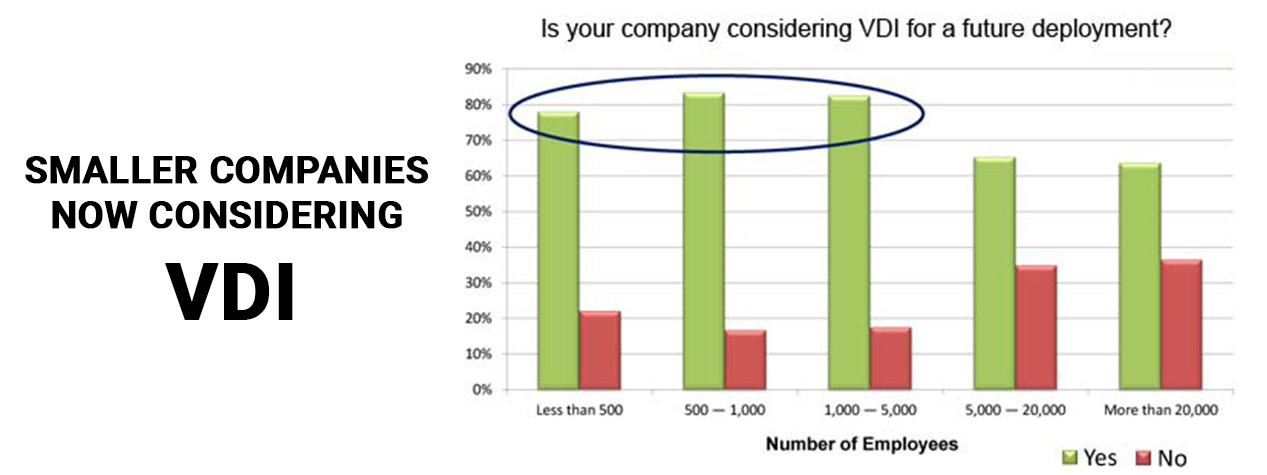The need of the hour is unequivocally the technology that empowers businesses with enough flexibility, ease of management and of course, data security. Virtual Desktop Infrastructure (VDI) is one such technology which has been a mainstay for its trending versions, persistently.
What is Virtual Desktop Infrastructure (VDI)?
Well, the term itself makes it quite clear about what VDI is. Virtual desktop infrastructure (VDI) is the technology that hosts a desktop operating system (DOS) running on centralized server for remote access. The VDI software helps organizations to create virtual desktop environment for various devices, be them desktops, laptops, and even smart phones.
This way, the virtual machines are created that offer remote access to the desktops running on them. This allows them to quickly update their technology infrastructure within existing resources without additional spend. The user is ingressed to run multiple operating systems, that too on the same device, maintaining data security.
Table Of Content
Table Of Content
So, How Essential is VDI ?

No other time in a high-tech era than this, when the whole world gets in turmoil facing the paroxysm of a biological disaster, can really make enterprises crave for a highly technologically accomplished infrastructure; an infrastructure deploying which, they are not only able to keep the processes running unhindered, but also enjoy a plethora of other benefits too!
Apart from this, the consumerization of IT, proliferation of devices other than the PCs, and the rise of smartphones are other driving forces behind the emergence of VDI technology.
Owing to their restrictive budgets, fluctuating capital, and the urge to cost-cut, the need of BYOD (Bring Your Own Device) in a virtual desktop environment has risen among enterprises. The highly simplified, economical, and secure infrastructure reduces overall management chores, operational costs and ensures data security.
The centrally managed applications are assessed by users through their local systems anytime. No doubt, the VDI technology eliminates conventional technological solutions, and associated risks related to data, performance and cost.
The technology heralds of:
- Business continuity
- Improved efficiency & performance
- Supported workplace mobility
- Streamlined workplace communication
- Better security
- Disaster Recovery
Yet the VDI coin has two conflicting sides, one opens up a gateway to opportunities while the other subjects you to a number of barricades in your way.
It is up to the organization to assess everything and decide upon ‘how to’s and ‘when to’s about implementing the technology in their systems architecture.
The assessment should include considering all that really matters:
- Need of easier management of administrative and operational processes.
- The employees’ agreement on BYOD (Bring Your Own Device) and working remotely.
- Security of crucial data and documents is a major concern.
- Need of agility and stability for growth.
- Desktop compatibility and better management of related issues.
Opportunities & Obstacles – Two Sides of the Same Coin

Opportunity: Reduced administrative and support costs, as the operating system installed applications are accessed by one and all. So there remains no need of attending to every single desktop.
Obstacle: To get custom applications for every user, personal settings are needed to be setup for them apart from the authorization to install these applications, which further requires enough storage space in the server.
Opportunity: Reduced need of upgrading every single desktop, to meet their hardware requirements, as the processes are run directly on the VDI server. This saves on both time and effort that can be utilized in other crucial activities.
Obstacle: The technology demands investing on the server hardware, with a consideration on network and storage issues that may rise up, which may at times, exceed the expected expenditure.
Opportunity: Easier management of hardware and cost reduction owing to the need to just maintain the data center. The VDI technology minimizes the management of a convoy of PCs, UPS, powerful storage and networking to manage various hardware needs.
Obstacle: VDI implementation requires one big centralized server that ought to be capable of managing desktop environments for the end clients, ensuring the processes are deployed the way they should. Now, in case this one server gets down, all the work will be at standstill, with badly impacted critical processes and their deployments as well.
Opportunity: Reduced down management issues while maintaining the single OS image. The applications are installed once to enable all the users benefit from, just at one go. This trims down the cost as well.
Obstacle: The implementation of VDI technology obviously would require the administrators to understand the software, its potential and constraints, likewise. The initial training on VDI software may be challenging due to the terminology and transformation. Having the users requiring unique applications amidst their personalized settings may lead to burgeoning images with messed up management.
Opportunity: Troubleshooting single system for multiple issues can be far easier than reaching out to every single PC and resolving their issues separately. In fact, in case of any single user facing hardware trouble can switch over to another system to access the data.
Obstacle: As already mentioned above, the server related trouble, impacts all the users at the same time, as all are dependent on single data source. So that makes it crucial to set up server-backups to stay on the safer side.
The implementation of VDI technology may be difficult in the beginning, but it promises extreme efficiency in the long run, which is hard to achieve with the conventional setup.
It is reported that the technology can help the IT organizations save over 30% in current scenario.
The implementation however, can be improved in various ways that include – employee participation in VDI implementation, their training, having a smart contingency plan for system failures, correct virtualization of all the applications and lot more.
The Advent of VDI Technology
According to a study conducted and published by Market Research Future, the global Virtual Desktop market is expected to grow at USD ~5 Billion by 2022, at ~9% of CAGR between 2016 and 2022.

The key players in VDI Market are – are Citrix Inc. (U.S), Google,Inc.(U.S), Dell, Inc. (U.S), Microsoft Corp. (U.S), Red Hat Inc.(U.S), VMware,Inc. (U.S), IBM Corp.(U.S), Mokafive (U.S), HP, Inc.( U.S) , N Computing Co. Ltd. ( U.S).
The VDI concept was, in initial stages, received with scepticism but according to a new survey by Dimensional Research, the prevalence of VDI technology is fast gaining magnitude. Not only large enterprises are deploying the technology, but small-to-medium businesses are also getting in the queue for adopting the technology.

Source: IT Business Edge
What are the top VDI software solutions in 2020?
After setting the sights on the VDI technology, it’s time the organizations begin with selecting the right virtual desktop infrastructure software. The VDI solutions market is pretty competitive, with some really big names that are making up the market. No particular software type can be the choice for all. Understanding their respective goals and requirements, the organizations should evaluate features, capabilities and tools of these solutions.
The top virtual desktop infrastructure software solutions for 2020 are here to succor the enterprises looking for flexibility, scalability, and business continuity in trying times like this. The list of preferred solutions can be narrowed down by considering their offerings, administrative tools, and definitely the cost.
Red Hat Virtualization
It is a comprehensive, open-source infrastructure solution developed by the Red Hat Enterprise Linux for agile functionality and rock-solid data security.
Top Attributes: Simple Setup, High Performance, Centralized Management
IBM Cloud
This is the software is meant for the access to graphic applications and is designed to eliminate productivity barriers and storage issues. The platform empowers all the mobile devices speed and convenient access complicated applications and files.
Top Attributes: Cost-Efficiency, High Speed and Security
Cisco VXI
The software integrates virtual desktops along with voice and video functions. It enables the IT departments making them flexible, safe, and a comprehensive infrastructure for a great user experience.
Top Attributes: High Speed, Flexibility, Streamlined Deployment
VMware Horizon Cloud
The cloud-hosted solution renders the remote users, a thorough access to data and other documents. It is deployed under highly secure environment and minimizes the management concerns at the same time.
Top Attributes: Unified Management, High Security, Flexibility
Citrix Virtual Apps and Desktops
The software allows mobility to all the users working remotely and minimizes IT expenses.
Top Attributes: Consistent Simplicity, Virtualized Communication
Amazon WorkSpaces
A well-managed and secure platform eliminates a number of management and administrative tasks. The deployment is simple that offers scalability.
Top Attributes: Fully-Managed Service, Low Costs, Active Directory Integration
The successful deployment of VDI requires some crucial considerations for the IT department, like – preparing the staff members, and backup plan for system outages. Alongside, the developers are striving hard to amend VDI to the new level termed as Hyper-Converged Infrastructure (HCI) that would enable the administrator to monitor the entire back-end system, the virtual machine configuration within the hypervisor.
According to a source, the global Virtual Desktop Infrastructure (VDI) software market is expected to reach the highest CAGR by 2025.
In Essence
The sudden upheaval for the mankind has made everyone realize the dire need to stay close and connected globally, by establishing a robust infrastructure that stays unsullied by any crisis, no matter what. The rise of VDI technology is definitely going to gain momentum in near future with improved operations, better performances, and efficient storage systems.
Know about how do Innovations Stand in Solidarity with Fighting the Corona Crisis.

